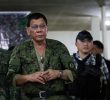CAGAYAN DE ORO CITY, Philippines – Internally displaced persons (IDPs) returning to Marawi City must register first with the local government so they can be given the necessary assistance, a City Welfare and Development (CSWD) official said.
Norainie Altao, project evaluation officer of CSWD – Marawi, said evacuees must go to their village chairs first for proper documentation and so that they can avail of cash and non-cash assistance.
“They (evacuees) must appear before their barangay chairman so they can be included in the barangay profiling or else they will not be included in the distribution of assistance,” Altao said, adding that many of the village offices in Marawi are already functioning.
She said the returning IDPs are entitled to receive food aid good for one month and P5,000 in cash.
Those who already received P1,000 cash gift during the Ramadan will only receive P4,000 once they arrive in Marawi, Altao added.
Transportation problem
But the main concern of the IDPs, Altao said, is that they are finding it hard to go back to their hometown due to transportation expenses, although the city government of Cagayan de Oro has expressed its willingness to provide vehicles that will take them to Marawi.
As of this writing, the city government has yet to give details on the transportation it will provide to the evacuees.
Meanwhile, the Department of Social Welfare and Development-10 (DSWD-10) said concerned government agencies are finalizing the list of IDPs before they can go back to Marawi as reports of non-Marawi residents availing of assistance for evacuees have surfaced.
At present, a composite team of personnel from the local government units and local and regional social welfare and development offices are conducting the mapping of houses in Marawi, especially those damaged due to the conflict, to verify the names of their owners.
Non-Marawi residents
This issue came up when it was discovered that many of those claiming to be IDPs who are home-based and those living in evacuation centers are actually not residents of Marawi, said Virginia Cardona, DSWD-10 disaster management focal person.
DSWD-10 said at least nine Marawi barangays, dubbed as “Cluster 1,” are now open to returning residents, namely, Basak Malutlut, Marawi Poblacion, Buadi Sacayo, Marinaut, Datu Saber, Moriatao Loksadato, Tampilong, Matampay, and Panggao Saduc.
As of November 15, the DSWD-10 has recorded 182,014 IDPs in Northern Mindanao 20,268 of which are staying here, and 95,011 in Iligan City.
Cardona said many of the evacuees come from the towns in Lanao del Sur surrounding Marawi who also fled their homes when following the fighting between extremists and government forces there.
Like the IDPs from Marawi, these evacuees also received food packs and other assistance from government and private agencies, she said.
In fact, she added, many of them are holding more than one Disaster Assistance and Family Access Card (Dafac), a document distributed to evacuees so they can avail of the humanitarian packages.
Cardona said Marawi residents should have been prioritized in the aid distribution, but admitted it was difficult for DSWD and other agencies to distinguish those who are from Marawi and those who are not.
During the distribution of relief goods, the DSWD didn’t ask too many questions to evacuees.
“We just ask them their names. We understand at the time since most of them left their identification cards as they were in a hurry to leave their homes in Marawi,” she said.
As the government has opened Marawi for its returning civilians, she said, many who are not from Marawi also attempted to go back to the city.
That’s why the mapping, she said, will prove to be helpful for concerned government agencies to verify if the evacuees on their list are actual residents of Marawi. (davaotoday.com)









